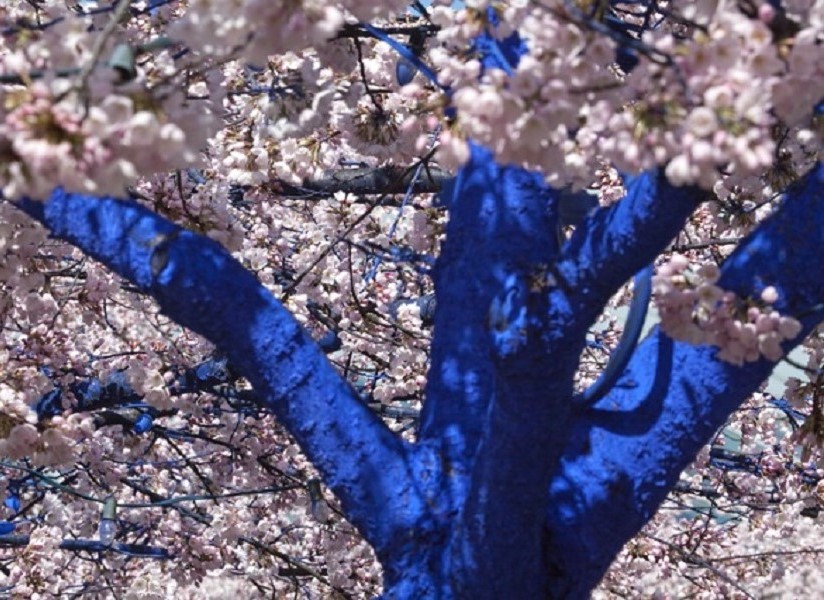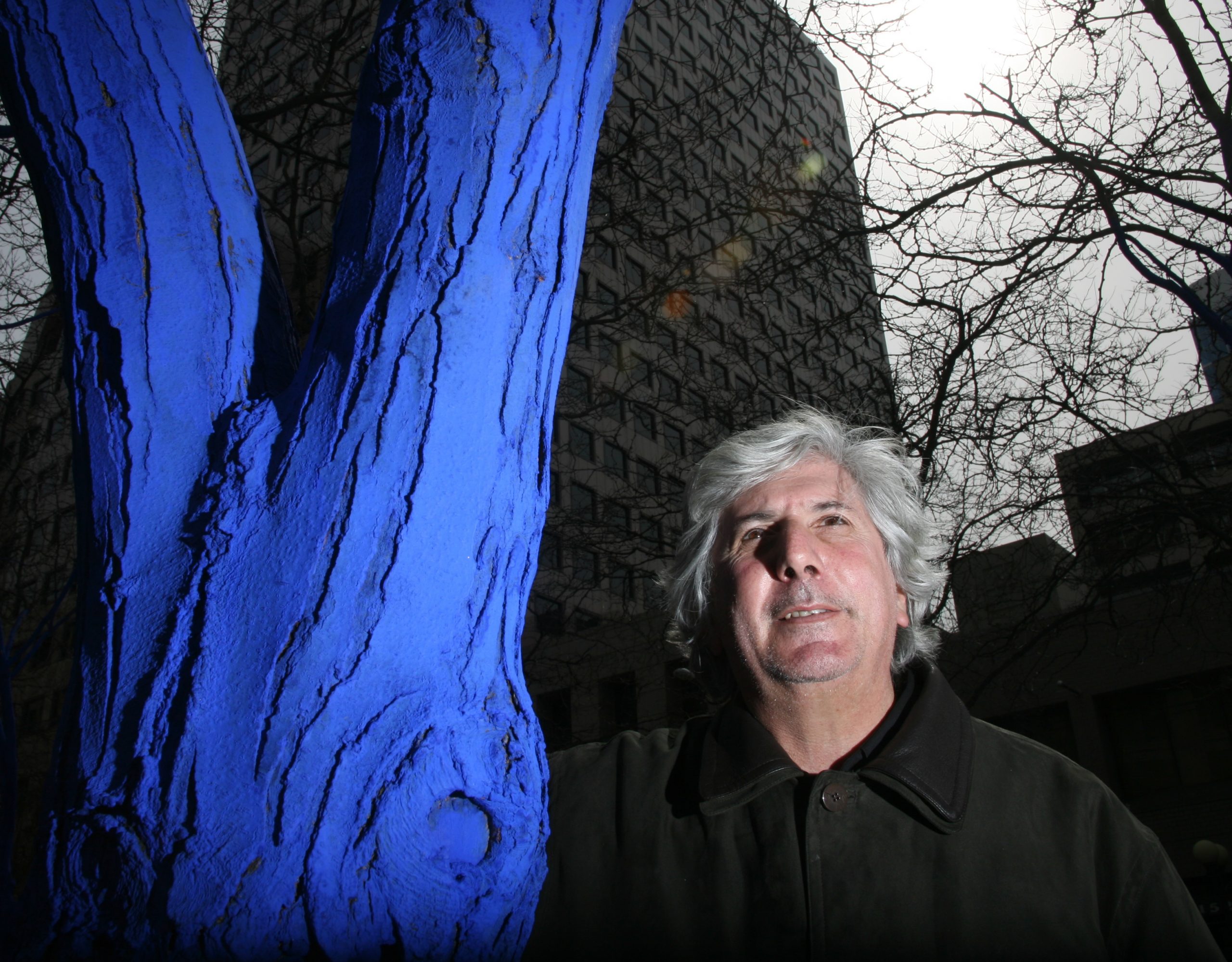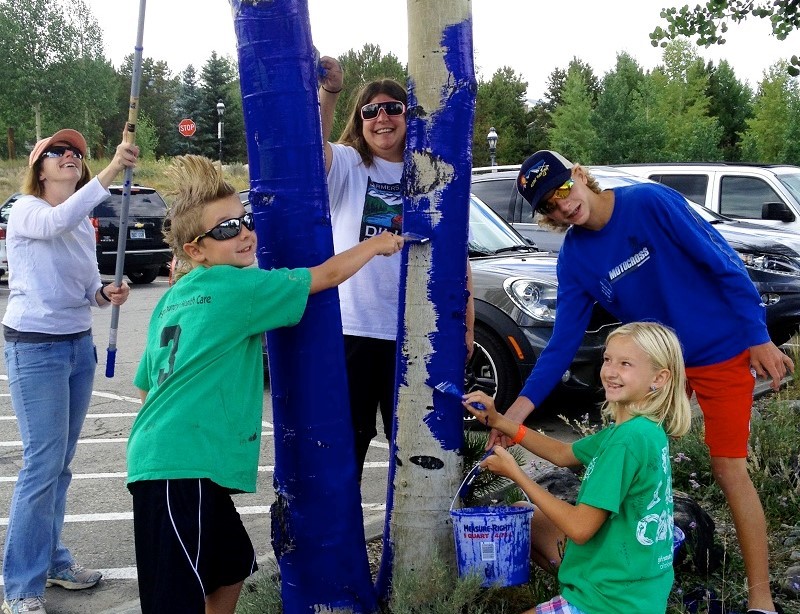Environmental Stewardship
Social Studies - Grade 5
This unit of inquiry is not a recipe book but rather a launchpad to inspire new BIG IDEAS. We encourage you to use and/or modify one, or several of the BIG IDEAS below. Adapt it to the grade/ ability level of your students.
Enduring Understanding
Art is and has always has been an extended part of nature and that art can effect social change.
Guiding Questions
How does Dimopoulos’ life and artwork connect to, and invite us to reflect upon global issues such as deforestation, natural resources, sustainability, and the importance of environmental preservation? What might be the historical significance of Konstantin Dimopoulos’ life and work?
What is environmental stewardship? How to become an activist? How can arts help save the world?
Mind Opening
Choose or devise practices to encourage students to be open to new experiences and ways of thinking in your classroom.
Idea: Mindfulfulness in the Forest
Have the students first look at the forest on the ipads and experience ‘the trees’ from the ‘screen.’ The next day, have the students take their ‘sit upons’ and go to an urban forest close to the school. Each student is to find a spot and sit silently and mindfully for a while. Through this experience, the students learn to see the trees by being there and have a greater appreciation for the trees and connected with nature in a mindful way. By going back to the ‘sitting spots’ throughout the year, the students see the changes in the forest.
Idea: Trees are the lungs of the planet
Explore the breath and mindful breathing within ourselves.
Discovery & Inspiration:
Launch the Project
• Introduce the Theme: Present the Enduring Understanding and Guiding Questions using vocabulary that is appropriate for your grade level.
• About Vancouver Biennale: Play a short video.
• Create Project Space: Brainstorm ideas to make the project theme visual and visible using bulletin boards, and/or a project corner to share relevant materials and inquiry questions and processes.
Reference Resources:
• Introduction to Sculpture and Public Art Unit Plan on information how art has evolved over time and the unique experience sculptures and/or public art brings.
• Vancouver Biennale 2014-2016 Exhibition Theme: Open Borders / Crossroads Vancouver
• The Blue Trees – West Vancouver and The Blue Trees – New Westminster and The Blue Trees – Squamish (Konstantin Dimopoulos, Australia)
• About Artist and Artwork (PDF)
Learning to Learn:
Art Inquiry
• Make a visit to one of The Blue Trees installations and encourage students to freely explore and interact with the art pieces individually and in groups OR
BIG IDEAS Anywhere educators: View The Blue Trees Video and encourage students to share their first impressions individually and in small groups.
• This Art Inquiry process enables the students to practice observing, describing, interpreting, and sharing visual information and personal experiences.
• Use the Art Inquiry Worksheet to guide and capture their ideas and impressions. Customize or create your own Art Inquiry Worksheet as appropriate for your project and class needs.
Shared Insights
• Sharing Art Inquiry Experience: Ask students to share the Art Inquiry Worksheet responses in class.
• View Guided Tour Video: View The Blue Trees Video again and talk about what new ideas have surfaced after class discussion.
• Significant Aspects of the Artist’s Life & Work: Using the following PDF entitled About Artist and Artwork, Konstantin Dimopoulos website, the teacher creates stations detailing Konstantin Dimopoulos’s life and work. In small groups students rotate amongst information stations detailing the artist’s life and work. Station topics include the following: (1) education and training; (2) lifetime of artwork; (2) materials and processes; (3) beliefs and values. At each station, students answer questions and complete a task. For example, at the station “life’s work” students might plot the artist’s various installations on a map of the world.
• Artist Themes – Environmental Stewardship: How does Konstantin Dimopoulos’s work reflect art can effect social change? Show students images of Konstantin Dimopoulos’s work in locations throughout the world. Students brainstorm possible preliminary answers to this question. Teacher records these and posts them in a visible area of the classroom. Introduce the three guiding questions: How does Dimopoulos’ life and artwork connect to, and invite us to reflect upon, global issues such as deforestation, natural resources, sustainability, and the importance of environmental preservation? What might be the historical significance of Konstantin Dimopoulos’ life and work? Reinforce that the purpose of this inquiry is to delve further into these questions and that answers and understandings are meant to evolve and change.
Inquiry Challenges
• Looking at Trees from a Scientific Approach – Anatomy, Biology, Ecology
Have students go outdoor and take a closer look at trees: the bark, the leaves, the branches. Consider learning activities such as bark rubbings, collection of soil samples, making leaf prints, and tree identification. Some useful tools include taking out the magnifying loupes and investigating and listening with a stethoscope. Engage students in some math lessons to think about height and circumference so that the students will have a solid base knowledge of trees in their minds before you take the students “outside the box” to think about the meaning behind The Blue Trees.
This scientific approach is a good transition to talking about the colorant used in the project. Explain how leaves, buds, flowers, and thick moss or lichen are not coloured. Introduce terms such as buds, moss, and lichen, in addition to the parts of a tree and types of trees to the students.
• Reflecting on Artist Statement and the Role of Art
Learning Outcomes: 1. Describe and respond to works of art and explore artists’ intent. 2. Reflect on the creative process as an individual and as a group, and make connections to other experiences.
Explore this part of Konstantin’s artist statement more in depth by asking students what makes them uncomfortable. Maybe devise some sort of simulation activity that centers around discomfort. “The Blue Trees takes an urban landscape with which you are familiar and changes it for a brief period of time so that it becomes surreal, unfamiliar, even uncomfortable.”
“We are creatures who like certainty and we become disconcerted when our environment changes. Yet we have altered and destroyed much of the global environment.”
Art-Making Activity: Ask students to select an item from nature such as a tree or grass and then change its colour. Students are to draw the item from nature and colour it in a different colour and write a paragraph explaining the significance of their art piece in terms of raising awareness for environmental sustainability.
The teacher reads the picture book The Disappearing Forests by Janice Parker to the class.
Devastation of Old-Growth Forests – “The Blue trees Project started as an idea to give visibility to something that is invisible. Deforestation happens somewhere out there – not in your backyard, but just far enough out that it doesn’t seem to impact your life. But it will.”
Explore the illusion of “deforestation happens somewhere out there” with the students. Get the students thinking and sharing about why forests are being cut down. Trace our daily uses of paper, furniture, and foods back to their origins in the forest. Extend the research and debate on the complexity and controversy of British Columbia’s resource-based forest industry, one on which the province was built. From our backyards to forests through the province, students can broaden their understanding globally to investigate/map the forests of the world and any conservation efforts. Reflect on how artists like Konstantin Dimopoulos can raise awareness of social issues through public art.
Art-Making Activity: Have students work in pairs to make their own picture book about deforestation.
• Role of Forests
Learning Outcomes: 1. Apply oral language to explore and express ideas, communicate with others, and contribute as a member of a classroom community. 2. Explore a rich variety of texts, including narrative, to deepen learning and develop a broader understanding of self, family, community, and the world. 3. Understand the role of forests in ecosystems and in the industrial world.
The teacher reads the book Forests for the Future by Edward Parker. Hold a class discussion on What is the role of forests in our ecosystems? What do forests provide to our industrial world?
Students write their ideas on a graphic organizer, and the teacher facilitates any further exploration on the significance of forests.
Art-Making Activity: With students in table groups, have them brainstorm ideas of how to make forests of the future more sustainable, and draft a plan with a drawing to represent their ideas. Each group presents and explains its finished product to the class.
Alternatively, students can develop a story for a drama performance (tableau, skit) or write their own lyrics and songs (for example, rap) about their ideas for “Forests for the Future.”
• Becoming an Activist
Learning Outcomes: 1. Express ideas, thoughts, feelings, and opinions through various forms of communication. 2. Apply prior and learned knowledge about The Blue Trees to create and present a group product.
Activate prior knowledge: Teacher asks students to make a list of the things they already knew about trees.
Watch the PBS video “203 Blue Trees” and “Blue Trees” video produced by Miranda Anderson, a secondary school student from Coquitlam. Ask students to make a list of things they learned from the video.
Each student writes down on a sticky note one key point he or she learned from the video. Students walk to another person in the room and share their thoughts.
Digital Art-Making Activity: In small groups, students use Glogster to create a digital multi-media poster to convey the key concepts in the video.
Class Share: Each group presents its poster and explains the significance of its poster in relation to environmental sustainability and Konstantin Dimopoulos’s work.
Alternatively, students can create a mural of The Blue Trees in the classroom with 2D drawing or 3D sculptures. The students can present what they have learned about the trees.
• Making Personal Connection
Learning Outcomes: 1. Appreciate the universal importance of story in Aboriginal and other cultures. 2. Make a personal connection with artwork and themes.
Teacher reads chapter one from the book Aboriginal Peoples and Forest Lands in Canada, edited by D. B. Tindall, Pamela Perreault, Ronald Trosper.
Art-Making Activity: Students draw a picture representing at least one of the main ideas from the chapter. Randomly select students to present and explain their drawing to the class.
Activating prior knowledge and learned knowledge: After watching the video The Forest in the City – Vancouver Canada, hold a class discussion on: What is your experience with forests? Why do you think forests are beneficial for humans? Students are asked to think about The Blue Trees and forests and make a mind map making personal connections to the artist’s work and themes (such as deforestation, natural resources, sustainability, and the importance of environmental preservation). Ask students to share their mind map with a partner.
Student Creations and Taking Action
Students are split into groups of four to five. Students are instructed to select an environmental issue such as deforestation, natural resources, sustainability, or environmental preservation. Students create a 2-min public-service announcement to raise awareness about one of the issues. Groups film their public-service announcement and submit it to the teacher. Create a film festival to showcase student work and share with the extended community of parents and other students in the school.
Reflection
• Teacher and students can reflect on their entire learning process by revisiting the Enduring Understanding and relevant Guiding Questions.
• How did the unit of study open inquiry, create cross–curricular learning opportunities and/or apply learning to real life situations? Has this unit of inquiry changed your opinions, values and world view? In what ways, if any, has it helped you grow as a learner?
Ideas for Cross-Curricular Access
• Language Arts – Expressing a Persuasive Argument: Students write a persuasive paragraph presenting reasons why people should stop deforestation and create a presentation using programs such as Microsoft Powerpoint or Prezi to present their arguments to the class.
• Science and Mathematics: Refer to the Looking at Trees from a Scientific Approach – Anatomy, Biology, Ecology in the Inquiry Challenge section for details.
Credits
Written by: Chrissy Nguyen
Contributor: Anita Lau, Mitchell Elementary School Teacher
©2015 Vancouver Biennale
Related Material
 Surrey Schools: Environmental Volunteerism & Social Action
Surrey Schools: Environmental Volunteerism & Social Action

